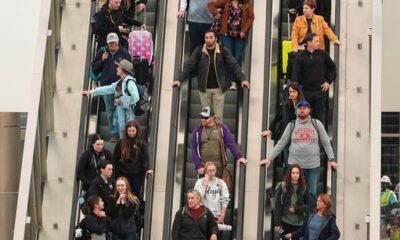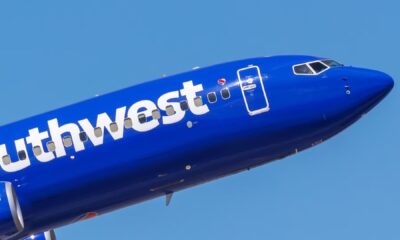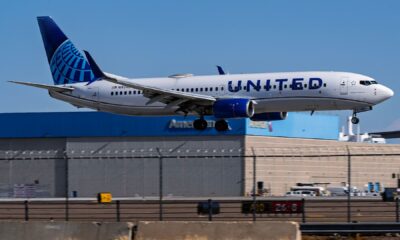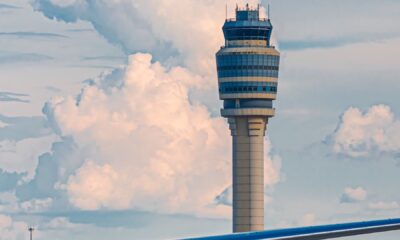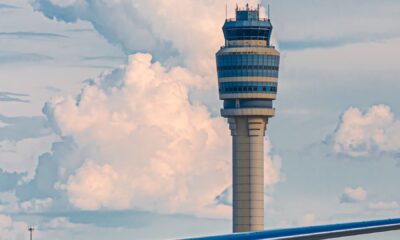World
Airline Delays Expected to Worsen Through Late 2025
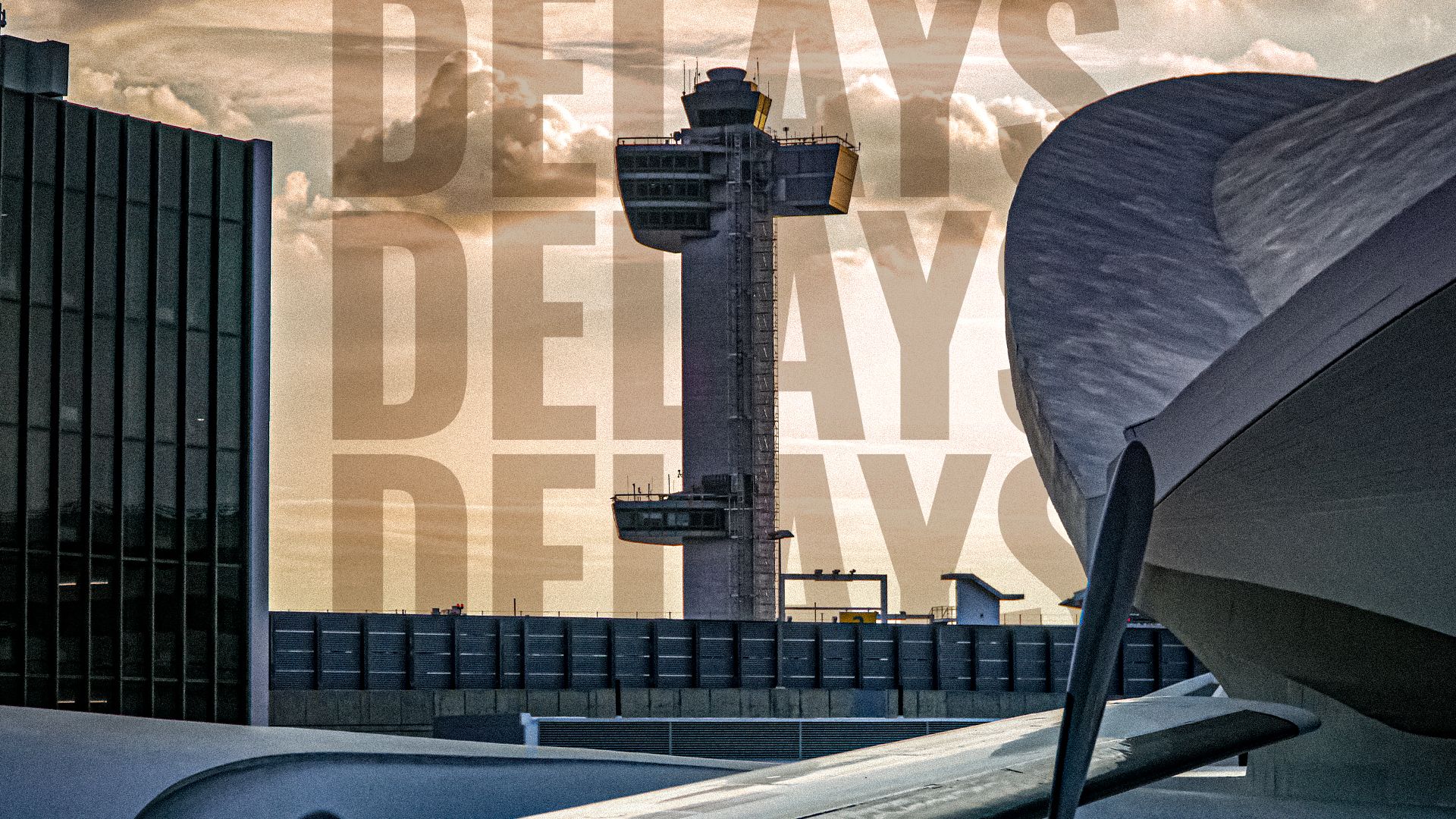
Airline delays are set to intensify through the end of 2025 as the air traffic control system grapples with significant staffing shortages and increased passenger volume. The recent government shutdown has exacerbated existing challenges, pushing the already strained system to its limits. On October 27 and 28, nearly 7,000 flight delays were reported across the United States, largely attributed to controller absences and staffing shortages at major airports, including Hartsfield-Jackson Atlanta International Airport (ATL).
The Federal Aviation Administration (FAA) noted that 44% of the delays on that weekend stemmed from controller absences, a stark increase from the typical rate of 5%. The situation was so severe at Los Angeles International Airport (LAX that a brief ground stop was implemented due to staffing challenges. As passenger demand reaches record levels in 2025 and winter storms loom, travelers should prepare for persistent delays.
The root of the problem lies not solely in the recent shutdown but in a chronic shortage of air traffic controllers, a situation that has developed over several years. Currently, the system is operating with insufficient staffing and modernization, making it prone to cascading delays.
Understanding the Causes Behind the Delays
Flight delays generally arise from five primary factors: internal airline issues, weather conditions, national air system capacity constraints, security challenges, and late-arriving aircraft.
In the current landscape, the national air traffic control system is facing severe capacity constraints due to high absenteeism among controllers and a lack of operational buffers. This means that even minor disruptions can lead to significant delays, as aircraft must hold or wait on the ground, resulting in a domino effect on subsequent flights.
Weather conditions, especially severe winter storms, are expected to further limit the system’s flexibility. As the FAA continues to manage these challenges, the agency has indicated that delays may become more pronounced, particularly during peak travel periods.
The Impact of Controller Shortages
A critical factor contributing to the increasing flight delays is the acute shortage of certified air traffic controllers. The FAA reports that it is several thousand controllers short of its operational target, with critical facilities like New York TRACON, Atlanta Center, and SoCal TRACON operating with minimal staffing buffers. Training new controllers takes between one and three years, depending on the complexity of the air traffic control facility. Even if recruitment efforts ramp up immediately, the benefits will not be realized in the short term.
Existing controllers are experiencing heightened workloads, often working mandatory overtime that leads to fatigue and increased absenteeism. When controller absences reach critical levels, the FAA is forced to implement flow restrictions, ground delays, or even total ground stops, resulting in thousands of delayed flights.
The current government shutdown has intensified staffing issues, as federal employees, including controllers and Transportation Security Administration (TSA) officers, are working without pay. This has led to a spike in absenteeism and declining morale among air traffic controllers. The FAA has already mandated flight reductions at 40 of the busiest airports, with potential cuts of up to 10% if the shutdown continues.
Travelers are facing delays rooted not only in airline operations but increasingly in the air traffic control system itself. The ongoing situation has created a scenario where normal levels of delays are no longer the expectation, as systemic issues continue to mount.
As the winter months approach, the combination of high passenger demand and the likelihood of severe weather events further complicates air travel logistics. Passengers should anticipate ongoing capacity constraints at major hubs, which will likely lead to continued disruptions throughout the remainder of the year.
Despite the potential for a resolution to the government shutdown, the staffing gaps that have developed during this period cannot be filled overnight. The training and certification of new controllers will take years, and the deferred modernization of infrastructure will further delay the restoration of system resilience.
In summary, the outlook for US flight delays remains challenging as the air traffic control system struggles with severe staffing shortages, rising passenger volumes, and unpredictable weather patterns. The ongoing government shutdown has only heightened these issues, leading to a cascading effect of delays that travelers may face for the foreseeable future.
-

 Politics1 week ago
Politics1 week agoSecwepemc First Nation Seeks Aboriginal Title Over Kamloops Area
-

 World4 months ago
World4 months agoScientists Unearth Ancient Antarctic Ice to Unlock Climate Secrets
-

 Entertainment4 months ago
Entertainment4 months agoTrump and McCormick to Announce $70 Billion Energy Investments
-

 Lifestyle4 months ago
Lifestyle4 months agoTransLink Launches Food Truck Program to Boost Revenue in Vancouver
-

 Science4 months ago
Science4 months agoFour Astronauts Return to Earth After International Space Station Mission
-

 Technology3 months ago
Technology3 months agoApple Notes Enhances Functionality with Markdown Support in macOS 26
-

 Top Stories1 month ago
Top Stories1 month agoUrgent Update: Fatal Crash on Highway 99 Claims Life of Pitt Meadows Man
-

 Sports4 months ago
Sports4 months agoSearch Underway for Missing Hunter Amid Hokkaido Bear Emergency
-

 Politics3 months ago
Politics3 months agoUkrainian Tennis Star Elina Svitolina Faces Death Threats Online
-

 Politics4 months ago
Politics4 months agoCarney Engages First Nations Leaders at Development Law Summit
-

 Technology4 months ago
Technology4 months agoFrosthaven Launches Early Access on July 31, 2025
-

 Top Stories3 weeks ago
Top Stories3 weeks agoFamily Remembers Beverley Rowbotham 25 Years After Murder

